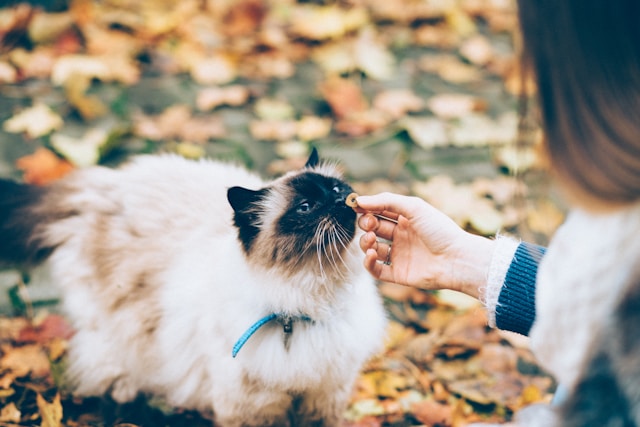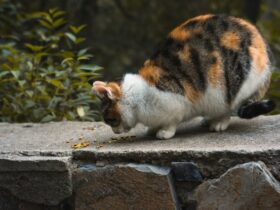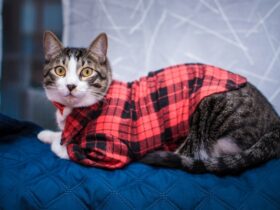Introduction
Feeding your cat the right amount of food is crucial for their overall health and well-being. However, determining the appropriate portion sizes can be challenging, given the variety of factors that influence a cat’s nutritional needs. This blog will provide a comprehensive guide to help you understand how much to feed your cat based on their age, weight, activity level, and health status. We’ll explore practical tips for portion control, address common feeding mistakes, and offer advice on managing your cat’s diet effectively.
Factors Influencing Your Cat’s Food Intake
1. Age
- Kittens: Growing kittens have higher energy needs and require more frequent feedings. They should be fed a specially formulated kitten food that supports their rapid growth and development.
- Adult Cats: Adult cats generally need fewer calories than kittens. Their diet should focus on maintaining a healthy weight and supporting overall health.
- Senior Cats: Older cats may have different nutritional needs, such as lower calorie content or added supplements for joint health. Consult your veterinarian for age-appropriate food recommendations.
2. Weight and Body Condition
- Ideal Weight: Cats at their ideal weight typically require a standard amount of food based on their caloric needs. Obese or underweight cats may need adjustments to their portions to achieve or maintain a healthy weight.
- Body Condition Score: Your cat’s body condition score (BCS) helps determine if they are underweight, ideal, or overweight. A veterinarian can assess this and provide personalized feeding guidelines.
3. Activity Level
- Active Cats: Cats that are highly active or spend a lot of time playing may require more calories to fuel their energy expenditure.
- Sedentary Cats: Less active cats, including those who are older or less playful, may need fewer calories to avoid weight gain.
4. Health Status
- Medical Conditions: Cats with specific health issues such as diabetes, kidney disease, or allergies may require specialized diets and portion sizes. Always consult your veterinarian for guidance on managing your cat’s diet in these cases.
- Weight Management: If your cat needs to lose or gain weight, your vet can provide a tailored feeding plan to help achieve your cat’s weight goals.
How to Determine the Right Portion Size
1. Follow Feeding Guidelines
- Package Instructions: Most commercial cat foods provide feeding guidelines based on your cat’s weight. Use these guidelines as a starting point and adjust based on your cat’s individual needs.
- Consult Your Vet: For precise recommendations, consult your veterinarian. They can provide personalized advice based on your cat’s health, age, and lifestyle.
2. Calculate Caloric Needs
- Determine Calories: Calculate your cat’s daily caloric needs based on their weight and activity level. Your veterinarian can help with this calculation or provide a feeding chart specific to your cat’s food.
- Adjust Portions: Use the caloric needs calculation to adjust portion sizes accordingly. Ensure you are providing the right amount of food to meet their daily energy requirements without overfeeding.
3. Monitor Body Condition
- Regular Weigh-Ins: Weigh your cat regularly to monitor their weight and adjust portions as needed. Significant changes in weight may indicate the need for dietary adjustments.
- Body Condition Monitoring: Regularly assess your cat’s body condition. A healthy cat should have a visible waistline and ribs that can be felt but not seen.
Common Feeding Mistakes
1. Overfeeding
- Too Much Food: Overfeeding can lead to obesity and associated health problems. Measure portions carefully and avoid free-feeding unless your veterinarian recommends it for specific reasons.
- High-Calorie Treats: Treats should only make up a small portion of your cat’s daily calorie intake. Avoid giving too many high-calorie treats, which can contribute to weight gain.
2. Inconsistent Feeding Schedules
- Irregular Meals: Inconsistent feeding schedules can lead to overeating or underfeeding. Establish a regular feeding routine to help regulate your cat’s appetite and ensure they receive balanced nutrition.
3. Ignoring Portion Sizes
- Eye-Balling Portions: Estimating portion sizes without measuring can lead to inaccurate feeding amounts. Use a measuring cup or kitchen scale to ensure accurate portions.
Managing Special Dietary Needs
1. Weight Management
- Weight Loss: For overweight cats, focus on reducing calorie intake and increasing activity levels. Your veterinarian can help design a weight loss plan that includes portion control and a suitable diet.
- Weight Gain: For underweight cats, increase calorie intake with higher-calorie foods and monitor weight gain progress.
2. Medical Conditions
- Diabetes: Cats with diabetes often need a diet with controlled carbohydrate levels. Follow your vet’s recommendations for managing your cat’s condition through diet.
- Kidney Disease: Cats with kidney disease may require a diet lower in protein and phosphorus. Consult your veterinarian for appropriate dietary adjustments.
Tips for Effective Feeding
1. Measure Portions Accurately
- Use a Scale: For precise portion control, use a kitchen scale to weigh your cat’s food. This helps prevent overfeeding and ensures your cat receives the correct amount of food.
2. Provide Fresh Water
- Hydration: Always provide fresh, clean water to accompany your cat’s meals. Proper hydration is essential for overall health and can support digestive function.
3. Monitor Your Cat’s Health
- Regular Check-Ups: Schedule regular veterinary check-ups to assess your cat’s health and make dietary adjustments as needed.
- Observe Changes: Pay attention to changes in your cat’s appetite, weight, and overall condition. Report any significant changes to your veterinarian.
Conclusion
Feeding your cat the right amount of food is essential for maintaining their health and well-being. By considering factors such as age, weight, activity level, and health status, you can determine the appropriate portion sizes for your feline friend. Avoid common feeding mistakes, manage special dietary needs, and consult your veterinarian for personalized advice. With careful attention to portion control and regular monitoring, you can help ensure that your cat stays healthy and happy throughout their life.
FAQs
1. How do I know if I’m feeding my cat the right amount?
Monitor your cat’s weight, body condition, and overall health. Consult your veterinarian for guidance on portion sizes and caloric needs based on your cat’s individual requirements.
2. Can I free-feed my cat?
Free-feeding may be appropriate for some cats, but it can lead to overeating and weight gain in others. Consult your veterinarian to determine if free-feeding is suitable for your cat.
3. How often should I feed my cat?
Most adult cats do well with 2-3 meals a day. Kittens and senior cats may require different feeding schedules. Consult your veterinarian for personalized recommendations.
4. What should I do if my cat isn’t eating?
If your cat is refusing food or has a decreased appetite, consult your veterinarian to identify potential underlying health issues and determine the appropriate course of action.
5. Are there special considerations for feeding cats with health conditions?
Yes, cats with health conditions may require specialized diets and portion sizes. Consult your veterinarian for tailored feeding guidelines based on your cat’s specific health needs.
This blog provides detailed guidance on determining the right amount of food for your cat, helping you support their health and well-being through proper portion control and diet management.











Leave a Reply